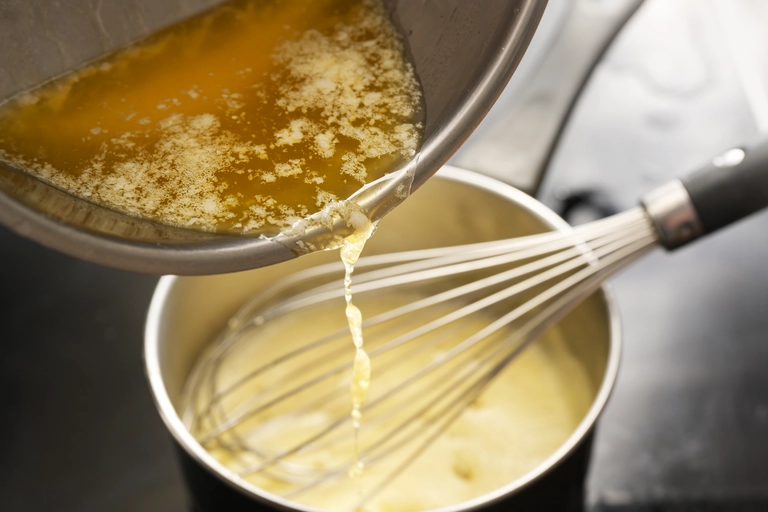I’m a big lover of sauces and believe they make everything better. Not only do they have the potential to add complex and nuanced flavours to any dish, but they also bring texture and cohesion to your plate. But when a sauce splits, all that magic can quickly turn into a greasy, curdled mess. Don’t toss it out just yet.
In this guide, we explore why sauces split, how to fix them, and what you can do to prevent future heartbreak.
Why do sauces split?
Understanding the science behind emulsification helps explain what went wrong. Emulsified sauces like Hollandaise, mayonnaise, and ganache rely on the delicate balance of water and fat. When that balance is disrupted or changed in any way, they split. Here are a few common reasons why:
- Fat was added too quickly: When adding fats in large amounts, the sauce doesn’t have enough time to combine and emulsify properly
- Heat was too high: High temperatures alter ingredient structures, like denatured proteins found in scrambled eggs or curdled cream, ultimately breaking the structure of the sauce
- Cold temperatures disrupt emulsification: Ingredients at different temperatures (like cold eggs in hot butter) can cause separation
- Incorrect ratios: Too much fat to liquid, or too little emulsifier, and your sauce won’t hold together
How to save split sauces
Don’t panic (just yet)! Many split sauces can be rescued if you act fast:
- Add a couple of teaspoons of liquid, like water, broth, or milk, when fat droplets appear. Mix rigorously until the fat combines again. Great for dairy-based sauces like creamy pan gravies, white sauces, and certain curries.
- Sauce not thickening? Slowly add more fat, like oil, an egg yolk, or a knob of butter, to help it emulsify.
- For cold sauces, like mayonnaise, you can try adding a touch of acid (like lemon juice or vinegar) to help bring the emulsion back.
- For warm sauces, like Hollandaise and ganache, a teaspoon or two of freshly boiled water and vigorous whisking can even out the temperature difference and bring the emulsion back together.
- High heat? Remove the sauce from the heat source and cool it down immediately using an ice bath, or pop in a cube or two of ice, and keep up the whisking.
- Fully broken sauce? Start a small fresh batch, then slowly whisk in the split sauce.
How to prevent sauces from splitting
Prevention in the kitchen is the key to success. Keep these tips in mind for your next emulsion:
- Use ingredients at the same temperature: Room temperature is usually the best.
- Maintain a gentle, consistent heat: Warm, not hot. A bain-marie is perfect for this.
- Measure precisely: Precision is key to emulsification.
- Use a reliable recipe: Follow a trusted method, especially when trying out a new sauce.
- Add fat slowly to liquid: Never the other way around.
- Whisk it like you mean it: Consistent agitation helps keep emulsions stable. Use a food processor or hand-held whisk for best results.
A split sauce isn’t always the end of dinner; it’s an opportunity to sharpen your kitchen skills. With a little knowledge and quick action, you can rescue your sauce or avoid splitting it in the first place. Master the method, and your stomach will thank you.

